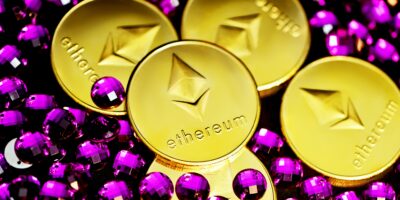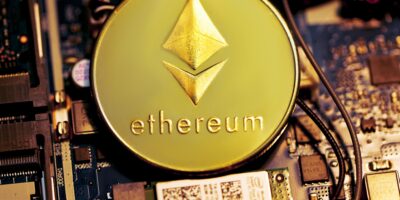Pokémon GO adds something that the series has never seen before, but it’s nowhere close to the definitive Pokémon experience. That honour falls to the Generation III games. These games were the first experiences that I had with Pokémon, so they hold a special place in my heart, but looking back objectively this is where Pokémon really hit its stride. I don’t want anyone to think that I’m knocking Pokémon GO, I truly think it’s a great idea and can’t wait to play it once exams are done. If I start before that I most certainly will fail every single course I’m taking, and no one wants that.
The Generation III games are Sapphire / Ruby, FireRed / LeafGreen, and Emerald. In my opinion the Hoenn region games (Sapphire, Ruby and Emerald) have the best story lines of any core Pokémon game (the GameCube games had some seriously awesome stuff). You start the games off as a young man or woman first being exposed to the world of Pokémon, and your adventure moves on quickly from there. You path quickly crosses with the villainous Teams Magma and Aqua, each with a grand scheme to gain supremacy over the other. You also make some friends: the old sailor Mr. Briney, his wingull Peeko and Wally from Petalburg just to name a few.
As you become a stronger and stronger trainer others begin to call upon your abilities. Near the end of the initial quest you have your first encounter with legendary Pokémon, either Kyogre or Groudon. Kyogre is the mascot of Sapphire, and is a mythical creature which may or may not have created the ocean. Groudon, Kyogre’s Ruby counterpart, is believed to have created the land. After diving into an underwater volcano the player finds one of these Pokémon snoozing within. In the Emerald version these titans are encountered battling in the middle of the ocean before the sky dragon Rayquaza arrives. Teams Aqua and Magma try to gain control of these Pokémon to try to expand the oceans and landmass respectively, each believing that their side holds to key to expanding life on Earth. Once the player defeats or captures their legendary Pokémon they can become the champion of the region and complete the game.
Pokémon GO, while an immersive and fun experience, can’t compete with the sheer scale of adventure that Sapphire, Ruby and Emerald supply. I don’t know when the last time that you dived into an underground volcano to save the world was, but I know that that’s something I’ve never done.
The Generation III were also the first games to have access to the 32-bit processor powered GameBoy Advance. The first two generations both ran on the GameBoy or GameBoy Color which are 8-bit machines. This immense increase in power meant that the graphics and sound were incredibly more advanced, and more game mechanics could be explored. Double battles, where two friendly Pokémon face off against two rival Pokémon at a time, were introduced in this generation. Natures and abilities were also added for every Pokémon, and the stat building systems (Effort and Individual Values) were refined and advanced. None of these systems have been significantly changed since this generation, because if something isn’t broken you don’t need to fix it.
The new games in Generation III were probably the last to introduce a full set of Pokémon that didn’t include truly dumb ones. Sure, Cascoon and Silcoon are just weird little cocoons full of hate and bad dreams, and Luvdisc literally looks like a misshapen pancake, but they were accompanied by some true gems. All three starter Pokémon evolve into grade A creatures, although I will admit that Sceptile looks a little stoned. Okay, a lot stoned. I’ve always loved the style of Ludicolo, the water and grass Pokémon exclusive to Sapphire. They kind of look like a cross between a pineapple and a duck, but they’ve wear a sombrero and sarape and love to dance. Awesome.
On the less goofy side of the Pokémon spectrum are Camerupt, Mettagross, Gardevoir and Salamance. Camerupt is a hulking creature that looks like a camel with volcanoes as humps. Mettagross is a massive steel spider. Gardevoir is a psychic type dancing Pokémon that can pack a real punch once trained. Salamance takes the cake though. This beast of a dragon Pokémon can become one of the strongest in circulation if given time.
Generation III was also the first series to introduce remakes. Pokémon Red and Green (yes, Green was localized to Blue in North America. They probably figured that North Americans would like Blastoise better than Venusaur) were re-released as FireRed and LeafGreen. LeafGreen was the second Poké-game I ever owned, so the nostalgia goggles are still pretty thick. These games tell essentially the same story as the originals, but include the graphics and mechanics updates introduce earlier on. This re-vamp allowed children, like me, who had missed out on the original 151 eight years prior to try to catch them all. I still remember the hype of catching Zapdos after trying all afternoon. Nine year old me ran around my grandparents’ house for a solid 10 minutes on Thanksgiving.
With today’s technology the Gen III games are easier than ever to play. Emulators allow pretty much any smart phone to play any GameBoy Advance game. I played through at least one adventure on each of my first three co-ops. They’re great games for bus commutes. The cinematic experience that the games give, along with the pure unadulterated joy that they embody, prove that these games are the quintessential Pokemon experience. You can, of course, disagree with me.
I want to thank my friend Alexa for writing the other half of this debate. I can’t wait to get Pokémon GO and join Team Mystic with you!




Anom
Emulators? Nice to see the Iron Warrior advocating video game piracy.